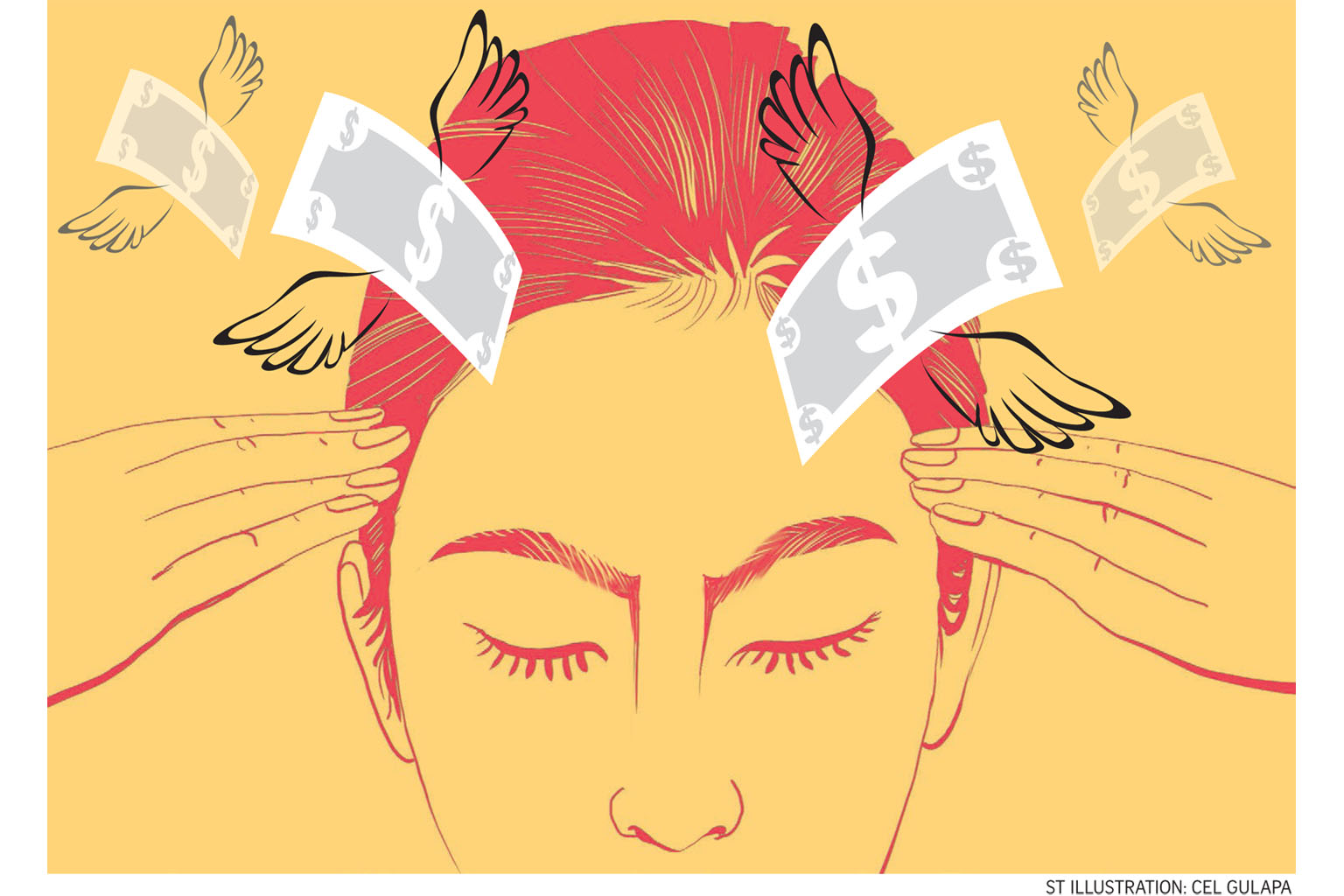Migraines cost Singapore $1 billion in 2018: Study
Productivity loss made up 80% of cost, healthcare expenses 20%
Sign up now: Get ST's newsletters delivered to your inbox

ST ILLUSTRATION : CEL GULAPA
Felicia Choo
Follow topic:
Migraine sufferers caused some $1.04 billion in economic losses in Singapore last year, a local study has found. Productivity loss made up 80 per cent of the cost, with the remaining 20 per cent attributed to healthcare costs.
People who experienced these chronic headaches also missed an average of 9.8 work days a year, and for those who continued working, the symptoms greatly reduced their ability to perform tasks, amounting to productivity loss of 7.4 days each year.
A migraine often progresses through several stages. Symptoms include constipation, irritability and visual disturbances, before the actual headache occurs. It lasts between four and 72 hours, mostly affects 30-to 40-year-olds, and is more common in adult women than men due to hormonal changes.
The overall lifetime prevalence of headache in Singapore is reported to be 82.7 per cent, of which migraines make up 9.3 per cent.
More than 600 full-time Singapore workers who suffered from migraines were surveyed online for the study, Economic Burden Of Migraine In Singapore, conducted by Duke-NUS Medical School and pharmaceutical company Novartis.
They were aged 38 on average, mostly Chinese, married and had at least tertiary education. Most were in managerial positions (60 per cent), with the rest in clerical jobs, or were semi-skilled or self-employed.
Researchers found that those who had migraines on four to 14 days each month incurred a per capita cost of $14,860 last year. The cost was $5,040 for those who had migraines on only three or fewer days each month.
Dr Jonathan Ong from the National University Hospital (NUH) said 100 new patients turn up every month at the clinic for headache disorders at the hospital and Ng Teng Fong General Hospital.
That figure has been increasing by about 10 per cent each year.
"It is not surprising because we are increasingly living in a stressful environment, being an Asian country - we're very work-driven, goal-orientated, spending longer hours at work, and stress is a major trigger for migraines," he said.
Migraine is linked to certain medical conditions such as depression and anxiety, cardiovascular disease, nasal or sinus inflammation, and can also be triggered by the environment, emotions and food.
"What's worrying is that our study found that approximately one in four patients in Singapore did not seek medical treatment for their migraine," said Dr Ong, who is a consultant in NUH's Division of Neurology and president of the Headache Society of Singapore.
Dr Eric Finkelstein from Duke-NUS Medical School said migraines have long-term detrimental effects on people's work, such as affecting their career progression, as well as their home life.
Medical tests made up 41 per cent of healthcare costs, followed by alternative medications (18 per cent), consultations (16 per cent), hospitalisations (13 per cent) and medications (11 per cent).
Researchers hope the results will raise awareness about migraines, so that more people can be properly diagnosed and workplaces will be more understanding of sufferers.
"When awareness increases, then policymakers will start to realise that migraine is a chronic disease and possibly allow patients to use Medisave and Medifund to access the latest treatments if conventional treatments don't work," said Dr Ong. The team plans to take the results to the Ministry of Manpower, the Ministry of Health and the Health Promotion Board.

